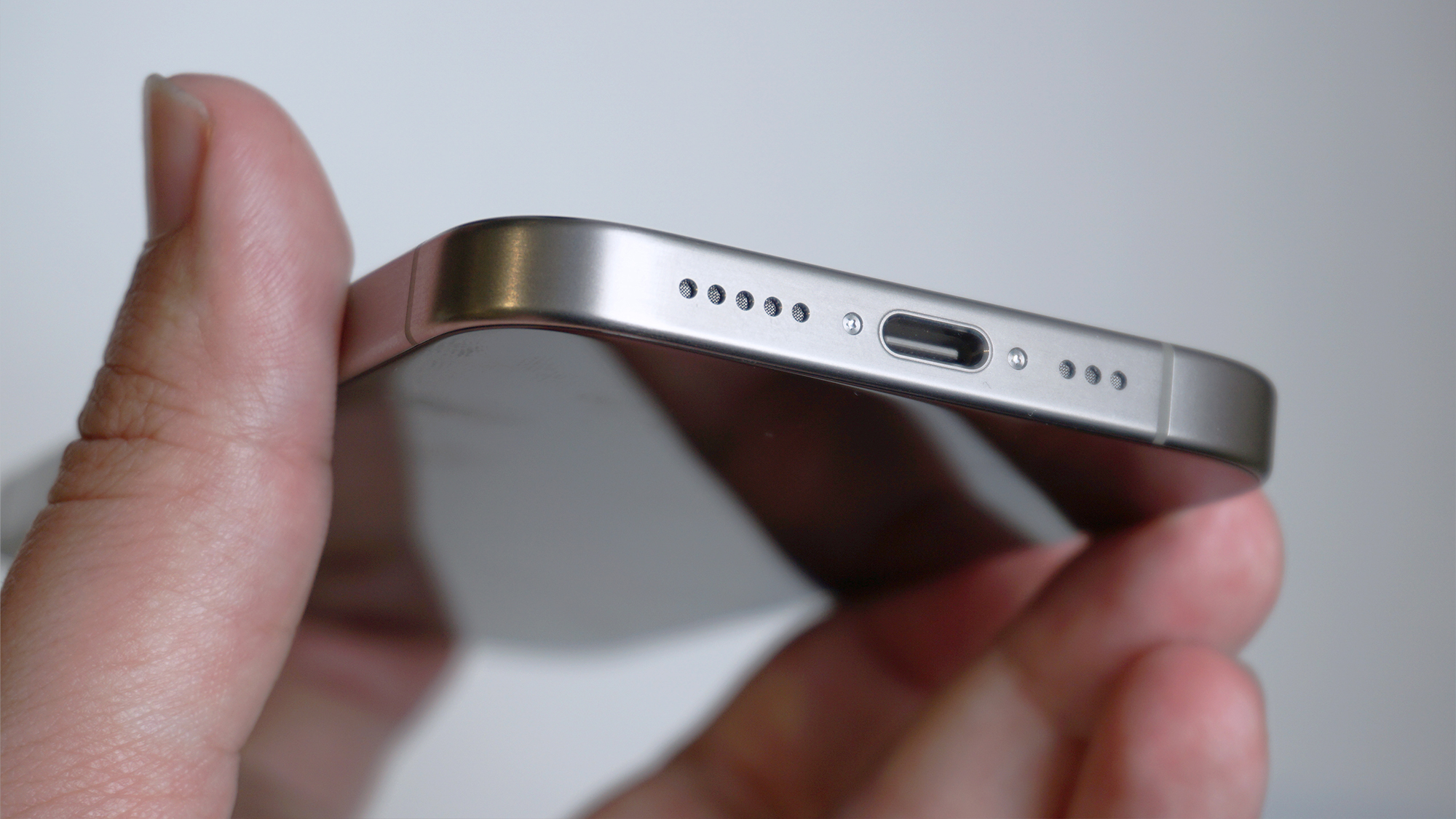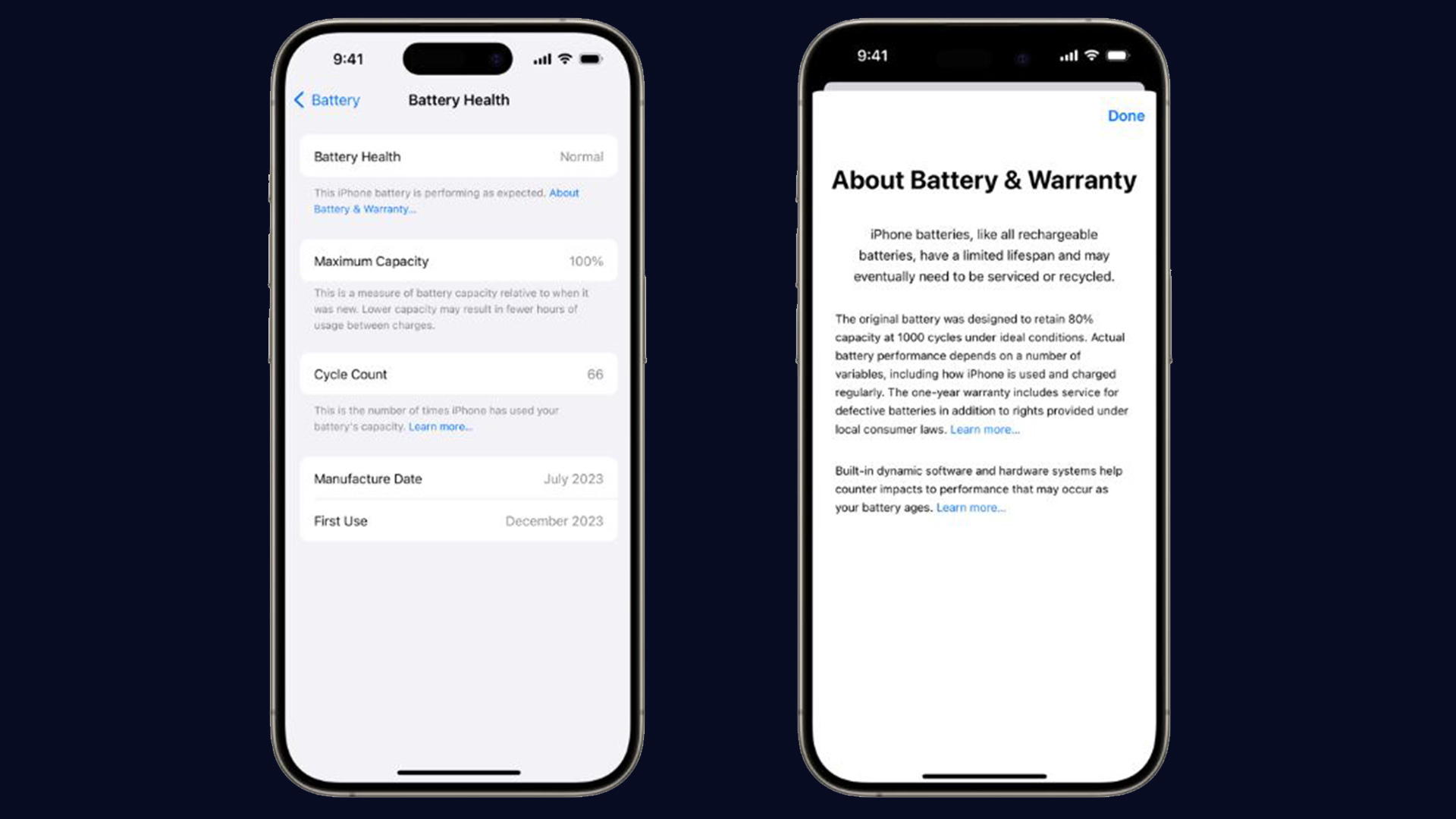Apple iOS 17.4 update could help you maintain your iPhone 15 battery for longer
Better battery breakdown at a glance

Apple will introduce changes to how battery information is displayed on the iPhone 15 series as part of the imminent iOS 17.4 update, replacing the Battery Health & Charging menu with an expanded Battery Health menu and more detailed sub-menu.
Details of the new Battery Health menu include the battery's maximum capacity percentage being swapped out for the status of your battery; which is rated as “normal” if the battery is functioning as expected. Changes coming with the new menu include the battery's maximum capacity percentage being swapped out for a battery status report, with the power pack rated as ‘normal’ if the battery is functioning as expected.
Users will also be able to access a detailed breakdown of the number of charging cycles completed – a figure that Apple now quotes as double what it was when the iPhone 15 series launched. Other helpful information, including the battery's manufacture date and the date of its first use, is also included – these details were previously buried in the About page within Settings.
Apple has also further tested the iPhone 15 series and now claims that their batteries should retain 80% of their maximum capacity (or higher) after 1,000 charge cycles, as opposed to 500, as was quoted at launch. Older iPhones are still quoted as holding around 80% charge after 500 cycles.

As mentioned, the new feature will only roll out to the iPhone 15, iPhone 15 Plus, iPhone 15 Pro, and iPhone 15 Pro Max for now; however, Apple is also testing select older models, so there’s potential for the quoted charge cycle figure to increase on other iPhones in future.
The iPhone 15 existing charging optimization settings appear the same and should still help maintain the battery's health over time, by learning user usage habits and capping charging past 80% (if enabled), thus reducing the time the battery spends at a higher charge.
This welcome update is currently in beta, and while the exact full release date for iOS 17.4 is yet to be confirmed according to Apple it’ll be March this year to comply as part of a large update and a host of changes required for new European Union regulations as part of the Digital Markets Act (DMA).
iOS 17.4 is expected to include a host of other new features, including improvements to Stolen Device Protection and new emojis, that will impact a wider range of iPhones.
While the chipsets used in phones are becoming more energy efficient, there’s still only so much that Apple or any phone maker can do to improve battery life and performance, as all batteries degrade over time and use.
The lifespan of a phone’s battery depends on many factors, including which settings are enabled or disabled (features like always-on display and app updates over cellular, for example). Optimised Battery Charging can help prolong the lifespan of the battery, but if it does stop functioning properly it may need to be replaced by Apple or an Apple Authorized Service Provider.
Get daily insight, inspiration and deals in your inbox
Sign up for breaking news, reviews, opinion, top tech deals, and more.
You may also like
James Ide was a writer for TechRadar specializing in phones and tablets, having previously worked at The Daily Mirror since 2016, covering news and reviews.
James loves messing with the latest tech, especially phones due to their incredibly rapid pace of development.
When not surrounded by various devices and/or tinkering with gadgets while putting them through their paces, James has a love of handheld consoles.
He is almost the textbook definition of a geek, who loves sci-fi, comics, games and of course, all things tech. If you think you have a story for him or just want to challenge him at Smash Bros, get in touch.
- Alex Walker-ToddSenior Phones Editor